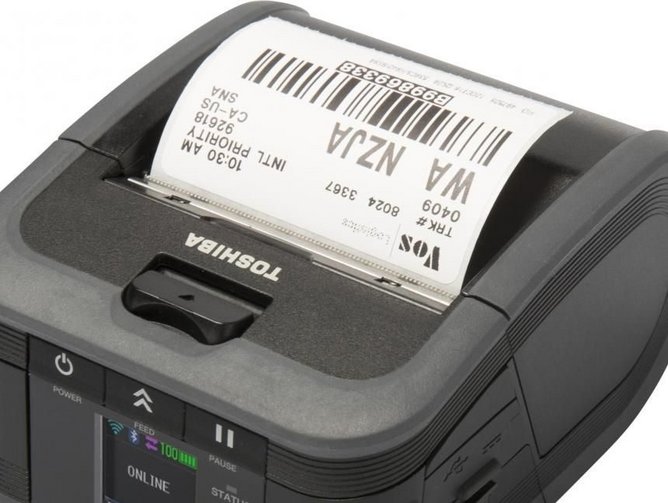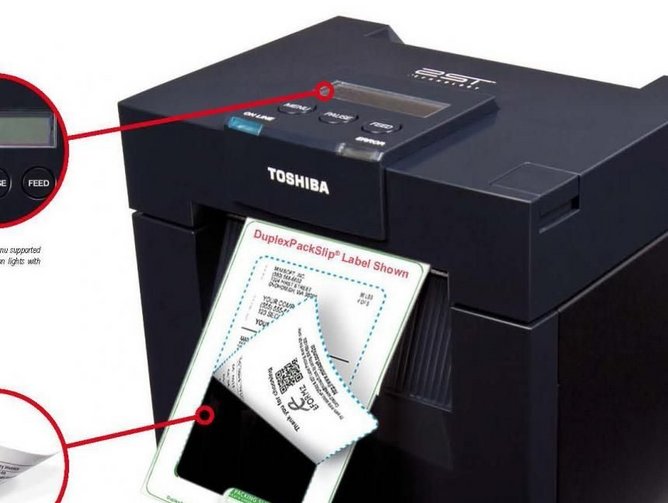Two separate business units based in the USA serve Toshiba's business clients in the Americas. We are not talking here about computers, televisions and the like which are the province of Toshiba Corporation but about the wide range of products, from color and monochrome multifunction printers, thermal barcode printers and digital signage solutions provided and marketed by Toshiba America Business Solutions (TABS) based in Irvine, California. TABS, and its sister company Toshiba Global Commerce Solutions (TGCS) in Research Triangle Park, North Carolina, which specializes in retail store technology and services, including point-of sale (PoS) software, hardware, are subsidiaries of Toshiba Tec Corporation, an independent company, publicly traded on the Tokyo Stock Exchange, in which Toshiba Corporation holds a little over 50 percent of the shares.
Thus TGCS and TABS operate independently of one another, however as TGCS Senior VP Global Operations Steven Mensch indicates, in supply chain matters they work closely together: “We have been working across the whole operation to look for synergies between the two companies to make us more efficient ever since Toshiba Tec’s acquisition in 2012 of IBM's Retail Store Solutions (RSS) division.” Mensch has supply chain ownership for TGCS. “We and TABS operate somewhat differently. TABS focus is the Americas while TGCS has a global focus with operations in 45 countries.” POS equipment, he explains, is a high volume, highly customized segment. And it is a growing one, despite the inroads of online purchasing which has only served to stimulate innovation as the 'frictionless' check-out comes closer to reality. “How do we make the process as frictionless as we can? We are seeing significant growth in self-check-out volumes as retailers move into that space. We want to make shopping more pleasurable, convenient, faster.”
To meet demand TGCS currently uses a set of strategic manufacturing partners in Asia, shipping through Tier 1 strategic fulfillment/EMS partner, which currently takes on pick and pack fulfillment and late customization and configuration. “Utilizing this strategic partner, we are working toward a shift in that model to leverage their overall strategic capabilities and in geo manufacturing.” This will also involve increasing the partner involvement in global logistics – which already has taken on inbound logistics support, providing them full visibility over incoming components, raw materials and finished goods – eventually outsourcing manufacturing all to the same partner. “It will allow us to reduce inventory, reduce lead times, keep a single touch on product and reduce our cost structure,” Mensch adds.
There's no doubt that the experience gained here will benefit the supply chain within TABS too, though it has a very different model having its own manufacturing and distribution facilities in the United States and Asia. “We cooperate with TGCS on supply chain matters,” says Steve Tungate, TABS' VP and General Manager of Service, Supply Chain & Innovation. Together with VP of Operations Sue Wilson and Steven Mensch they form a supply chain triumvirate that works to create better solutions for the customer and the business alike.
The mature and very competitive market for printers and copiers is still the backbone of the TABS business, though the digital signage and thermal barcode printing segments are growing fast. “That means we have to manage a much more diverse supply chain than in the past with the mature products,” says Tungate. “TGCS and TABS have a very different business model today and we are working toward the best solution,” Wilson agrees. “For example in the last couple of years we have been negotiating on shipping rates, lanes and partners. Our supply chain is beginning to come together as we negotiate with vendors to leverage our volumes.”
A parallel challenge has been the integration of ERP systems across the Toshiba Tec businesses. When the former IBM Retail Store Solutions (RSS) division was acquired it migrated to Oracle, however the version adopted by TGCS was different from TABS' legacy version, and integration is an ongoing challenge. Rather than wait for a large and disruptive migration to the common system, we decided to take advantage of the areas that would deliver the best immediate result, says Steve Tungate: “We are now in the process of building a common distribution network for the business, and that will be done well before we are done with system integration.” At the moment the focus is on inbound logistics, and already some TGCS products are being fulfilled out of the print group's supply chain. It's a process of opening interfaces between the two companies that are simple enough from an IT perspective, achieving economies of scale well ahead of complete integration which will be achieved in 2019.
Oracle integration is not merely an internal project. TABS differs from TGCS; while the latter deals with large global customers of the order of Walmart for example, no single customer of TABS accounts for more than two percent of revenues. Its route to market is through its own stores and an independent distributor community numbering more than 200 in North America and many more in the Latin American countries. All of these have to be brought onto the new system as well. “Everything we do is designed around beneficial change to our customer,” insists Tungate. “Gaining efficiency in our supply chain helps the customer because it improves our profitability and allows us to invest in our business.”
That principle informs the relationship between TABS and its vendors, continues Sue Wilson. “We select vendors who are not just going to give us the cheapest price, but have the experience and the drive to help us find the right solution.” This partnership model brings in best supply chain practices by leveraging their experience and wider customer base. It is the best way to keep abreast of change in this volatile marketplace, she believes.
Innovation is in Steve Tungate's job title and he says it is the fun part of his work. “We aim to be the best and easiest company to do business with and we have always been out in front of the competition on that metric. A lot of innovation is taking place in the operational supply chain and that is what enables us to continue to improve our overall position in the market. We know we are not the biggest so we try to treat our customers the best.” For him, innovation means the evolution of corporate strategy, not just in supply chain but in every department.
Innovation is a frame of mind, and all the tools in the box, whether Six Sigma or lean processes, are just there to achieve business improvement. Ideas should be sought at every level, he says, and as an illustration he cites a project that recently closed. An employee at the South Dakota manufacturing facility raised the question of why the climate control equipment had to function all of the time across the entire plant even in rooms that were not in use. His innovation project was a system to shut off the fans when rooms were not in use: it saved the company $8,000. Tungate says.
“Although these savings are very small it is a great example of a culture of innovation that starts from the top and involves all associates. We highlight this project because we want everyone to know that they can make a difference. If they need skills support or resources to implement their idea, it will be there for them,” adds Sue Wilson. “There are green belt project leaders throughout the organization, and even if it's just putting in hand dryers in a restroom everyone at the plant gets involved in the project.”
Many such innovations arise from the shop floor, others from middle management, and the highest value ideas are launched at board level. “A couple of years ago our CEO asked us to look into IoT technology to better monitor, manage and serve our installed base, which is in the hundreds of thousands,” Wilson continues. “We developed a solution that allows us to do things we could never have considered even a few years ago.” Starting with a strategy and concept a joint team developed the Toshiba industry exclusive e-BRIDGE CloudConnect tool. It allows service providers to manage devices and free up resources with remote meter reads, firmware updates, and toner alerts to trigger automatic supplies deliveries. Simple to activate, it monitors a device's status, security setting and the like and if they deviate from the customer's specification it reconfigures them without human involvement, and importantly, without delay or down time.
Does that look like a deviation from a purely supply chain story? For Sue Wilson and the two Stevens, there are no such silos.








